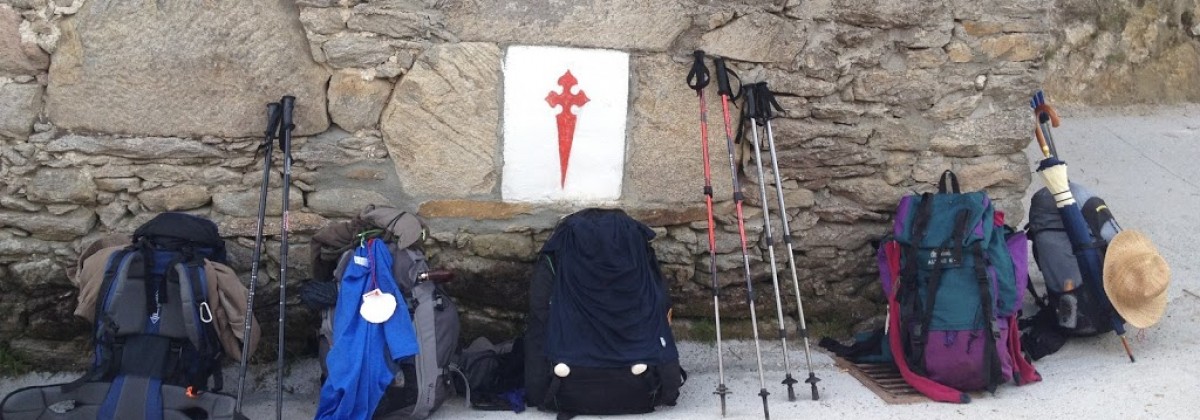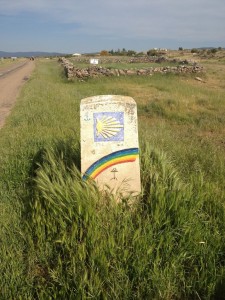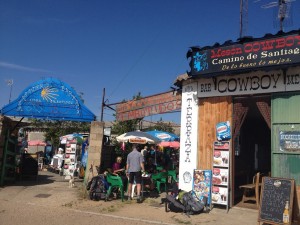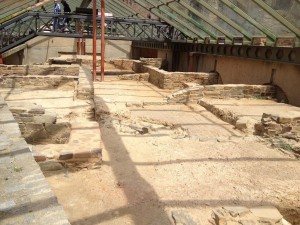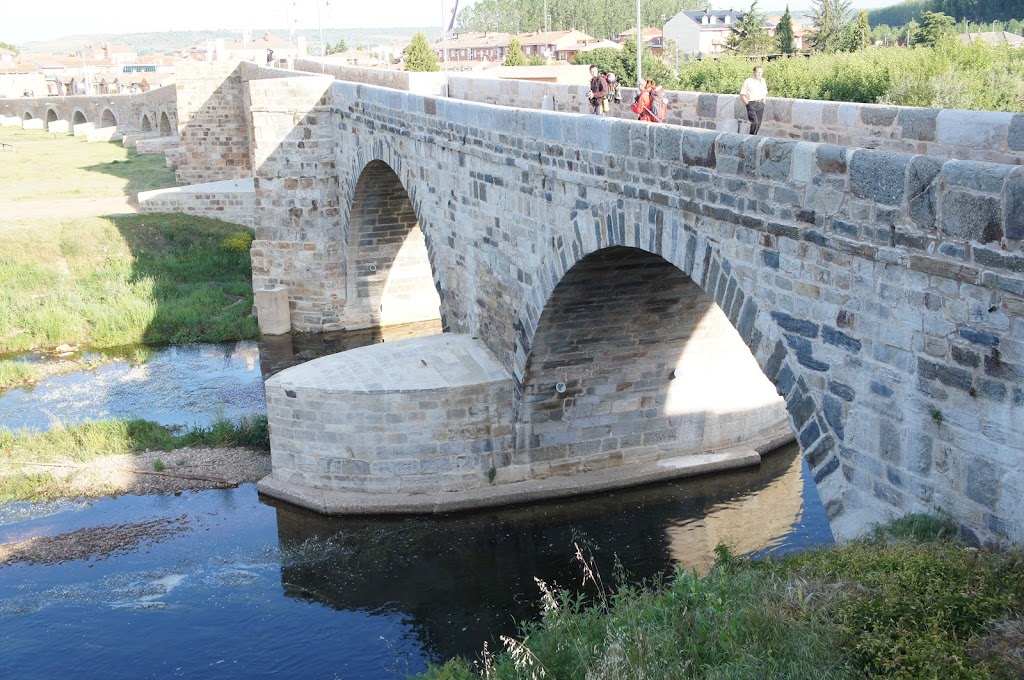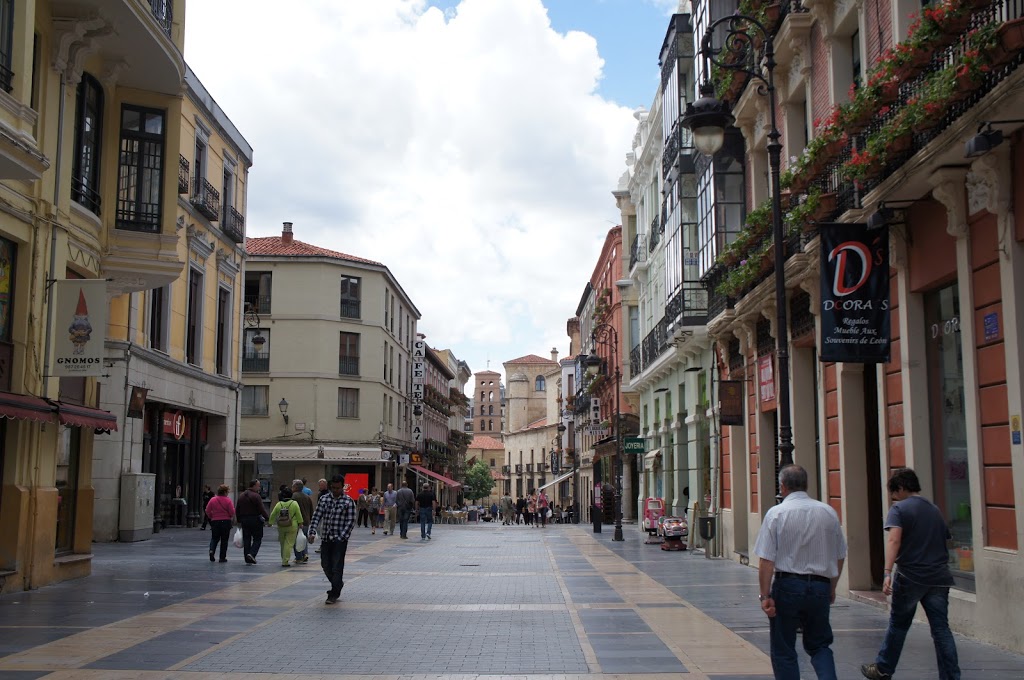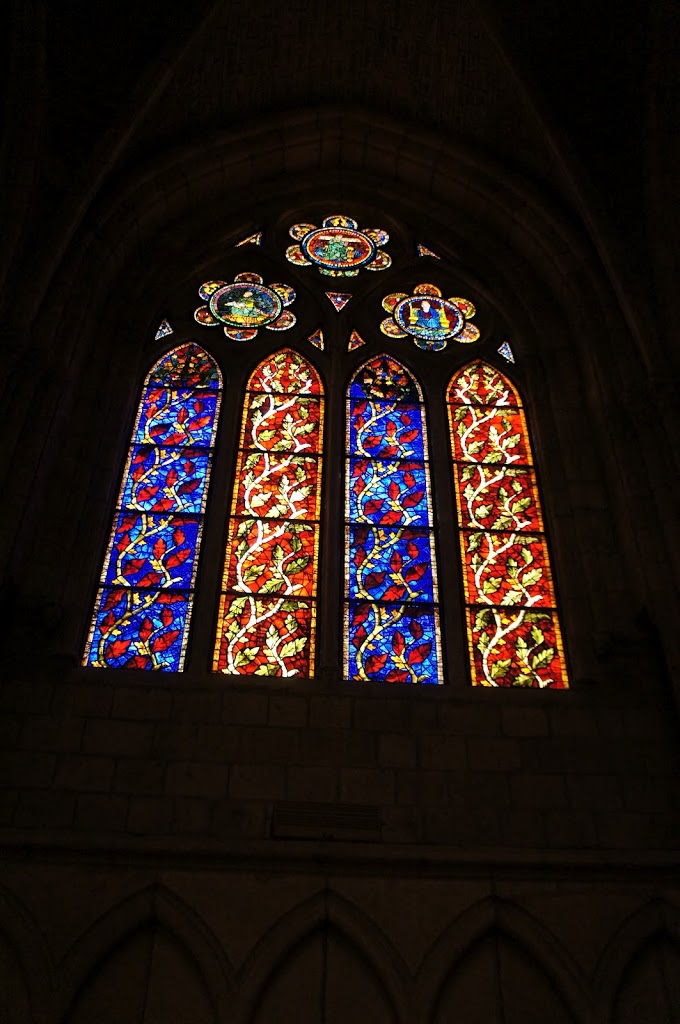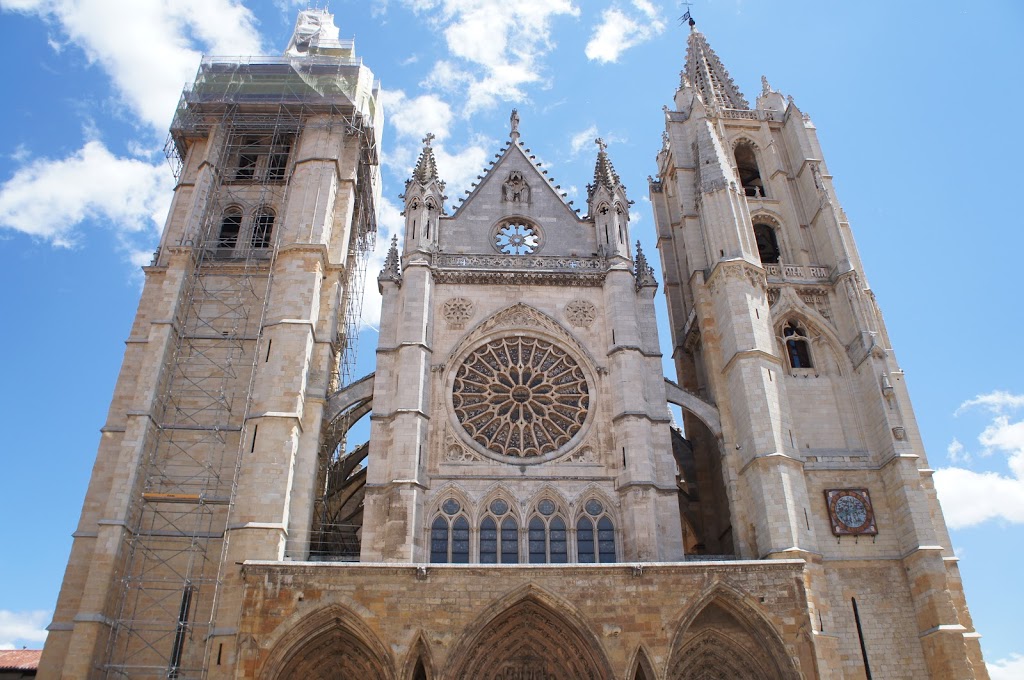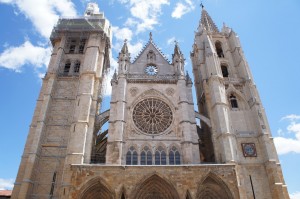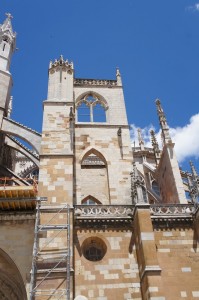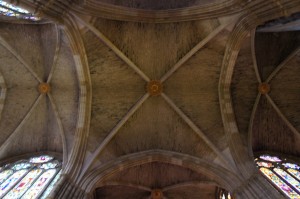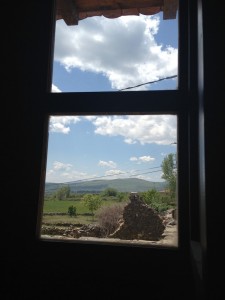 of all the types of potential accommodation available along the Camino, it took us 24 days to stay in a casa rural — basically a B&B — but it was worth the wait. the place I’d tried to book (fancier and farther up the hill) didn’t have a record of my request (which didn’t come as a surprise) so we headed back down the hill ad tried the first non-albergue we could find. the room they offered us overlooked the main road (along which the Camino began its final ascent towards our next set of mountains) and a ruined building with mountains in the distance. a wonderfully peaceful place to rest with spectacular view.
of all the types of potential accommodation available along the Camino, it took us 24 days to stay in a casa rural — basically a B&B — but it was worth the wait. the place I’d tried to book (fancier and farther up the hill) didn’t have a record of my request (which didn’t come as a surprise) so we headed back down the hill ad tried the first non-albergue we could find. the room they offered us overlooked the main road (along which the Camino began its final ascent towards our next set of mountains) and a ruined building with mountains in the distance. a wonderfully peaceful place to rest with spectacular view.
after our standard shower-nap program, our location dictated that either of our food options required a steep climb back up the hill; our fatigued feet opted for the easy way to start (downhill) and delaying the greater exertion for later. immediately next to our casa rural stood a tiny church whose door stood open to entice peregrinos to enter. inside, beyond an alcove with a history of the church written on panels, and through metal bars designed to keep unsavory characters away, stood a remarkably impressive, gilded altar. dazzling in the sunlight that filtered through the open door — in a tiny church in a tiny town way off the beaten path in remote León. in a church that wasn’t even the village’s primary church! the wide-ranging influence of the Catholic church, sneaking up on you in the most unusual places.
the village dates from the period of Roman mining of precious metals in the nearby hills though its location on the Camino — approximately one day’s walk from the popular starting point of Astorga — enhanced its viability. ** an aside: in order to receive the Compostela in Santiago, one needn’t complete the entire Camino Frances (departing from St. Jean-Pied-de-Port or Roncesvalles). you technically only need to walk the last 100 kilometers (from approximately Sarria), about which more later, though many people complete it in stages. most commonly, people complete it over three years and walk St. Jean to Burgos one year, Burgos to Astorga another, and then Astorga to Santiago. ** in the 12th century, the Knights Templar maintained a garrison in Rabanal tasked with protecting peregrinos heading over the mountain towards Ponferrada, a Templar stronghold. while Rabanal catered strongly to peregrinos, it was merely one of several small villages along the Camino up the mountain to do so, and some itineraries had people continuing on to the nearly-deserted town of Foncebadon instead. after walking through as part of a steady stream of peregrinos, I can’t quite imagine spending the night in such a ghostly shell of a town-that-once-was.
